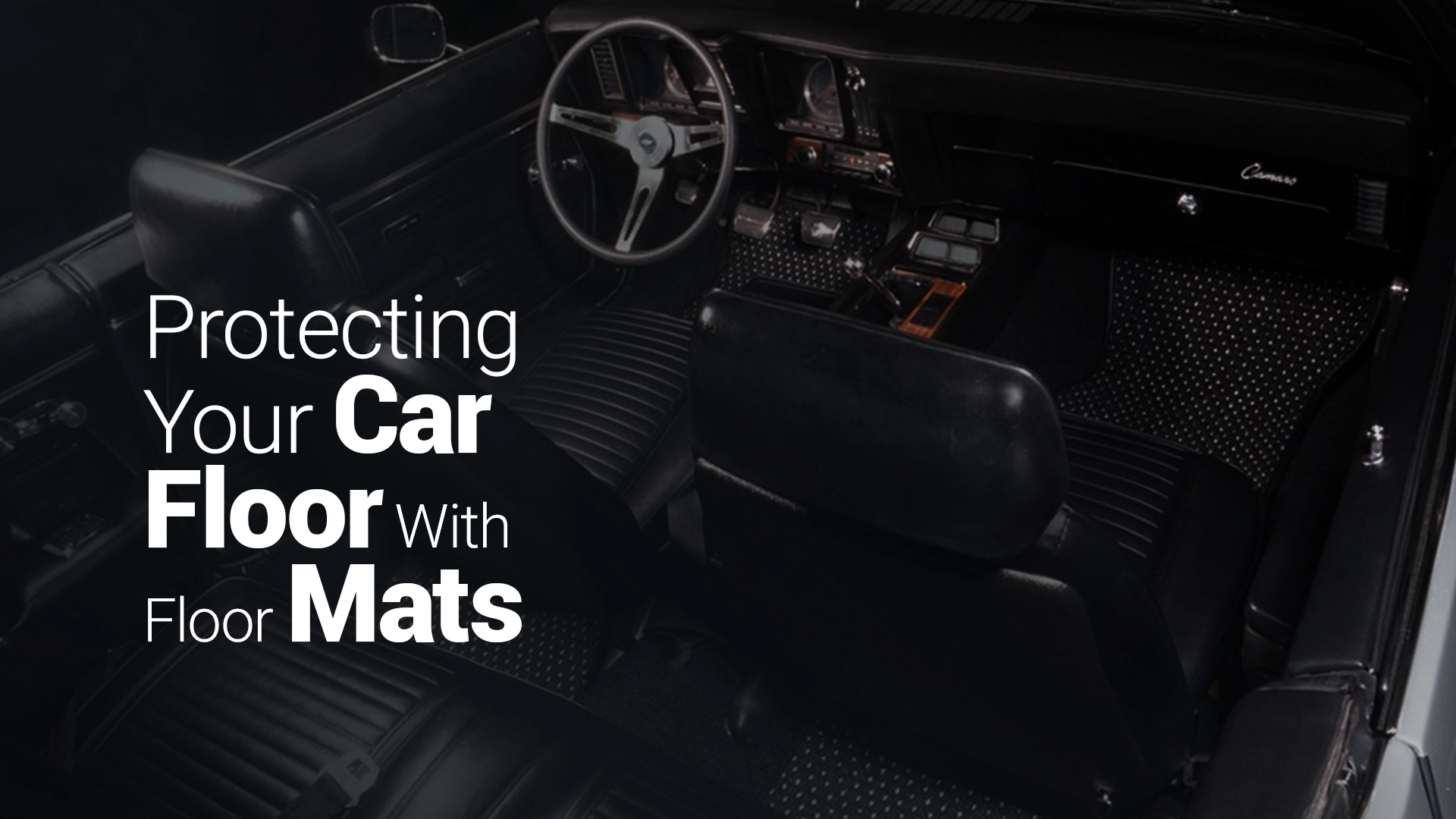Protecting Your Car Floor With Floor Mats
Your Guide To Carpet Protection In Vehicles

Trust me, your vehicle’s carpet goes through way more than you think it does. Perhaps you live in a rainy or muddy area, or you pick up kids or pets along for a ride –– either way, having a proper floor mat is there to protect your vehicle from all the food and drinks you’ve spilt, or the dirt and mud you’ve tracked through.
Having ample protection is even more crucial if you live in regions with rain and snowfall, as the water or snow may contain harmful microorganisms that can fester inside your vehicle, which may lead to mould growth or other irreversible electrical and mechanical problems. For example, once water enters your vehicle’s electrical system, it may prevent your distributor from sending electrical signals to the spark plugs.
Having a proper floor mat or liner can save you a ton of work when cleaning your vehicle’s interior, which will aid you plenty when creating an odour-free and sanitary environment. Read on more to find out what kinds of car floor mats and liners we recommend. You may also want to know how to dry car floor mats.
Floor Liners
As the name suggests, floor liners help to line each and every visible square inch of your vehicle floor. Whilst floor liners are considerably more pricey, they offer a fit-all shape that provides lips and walls around the edges which trap liquid and debris from spillages. This means that developers would need to examine the floor of each vehicle to create customized floor liners that perfectly match your vehicle’s contours.
Floor liners help to provide considerably more protection than mats when it comes to spillages and excess fluids. You won’t need to worry about fluids seeping through the cracks or corners of your liners –– these products use high bolsters that can collect and trap any liquids on their surface, ensuring that nothing seeps onto the carpet they are covering. Furthermore, you won't need to fuss about these liners shifting and sliding out of place! They come with small spikes attached to the bottom that hold tightly onto the floor of your vehicle, locking it in to become an extension of your vehicle.
Floor Mats
Whilst floor mats can offer the same amount of protection as floor liners, they aren’t customized by developers to match each vehicle floor and driver; instead, they come in a range of premade sizes where drivers can order online or in-person. This is done to keep the manufacturing costs of each floor mat significantly lower than floor liners, which is hence reflected through their relatively cheaper prices. Though these sizes may not be tailor-made, drivers need not fret –– you’re still able to choose from a variety that can contour closely to the size and shape of your vehicle.
As the floor mats do not adhere completely to the exact dimensions your vehicle may have, there is a possibility that they might slip and slide around. Whilst this may result in a slight hindrance, floor mats are considerably more malleable and flexible as compared to floor liners. You don’t need to worry about locking it down in the perfect position –– just put it down and start driving! Plus, rather than using high bolsters to trap and redirect the liquid to the surface, floor mats utilize deep chambers embedded deep within the rubber to retain the fluid. If you notice excess fluids piling up on the mat, take it out and give it a shake –– a quick wipe should do the trick.
Floor Mats vs Floor Liners: What’s The Difference?
Regardless of whether you end up choosing floor mats or floor liners, both products are equipped with durable, tough-as-nails rubber, where you won’t need to worry about breaking if you’re driving. Installing a mat or liner helps to protect and facilitate the removal of excess fluids from the floor of your vehicle, hence preventing them from being absorbed into the system.
Instead of paying thousands of dollars on repair fees, isn’t choosing to have an inexpensive floor mat and liner the much better option? However, there are some slight differences between having a floor mat and liner that you may want to consider. We’ve listed three possible features that you should take note of: the rims and ridges, thickness, and the underside of the mat.
Firstly, selecting a product that has higher ridges and rims means that there is less liquid and debris spillage when fluids begin to pile on. Plus, you can choose a floor mat that has grooves and ridges that force liquids away from the driver’s feet.
Secondly, whilst choosing a thicker floor mat or liner allows the product to provide more cushion and absorb more fluid, it can result in one hell of a cleaning process. When choosing a rubber or plastic mat, do make sure that the grooves around it are deep enough to prevent liquid from spilling out.
Lastly, remember to take note of the underside of the mat or liner before purchasing them. You don’t want a mat that constantly slides around! Ideally, there should be a small hook attached to the vehicle that can connect to the mat and liner, and keep it in place.
Conclusion
Whilst both products are great choices for vehicle prevention, it boils down to your individual needs and preferences when choosing between mats and liners. For example, drivers with kids, new vehicles, or spend significant amounts of time in rocky and dusty terrains (frequent spillages, beaches, mountains, snowy, rainy conditions) may prefer having an all-coverage floor liner that can protect the floor from wear and tear. Alternatively, drivers who have an older vehicle may prefer a more inexpensive floor mat that can provide enough protection. For these drivers, purchasing a floor mat won’t cost you as much money, but it’ll still protect the vehicle from exposure to excess moisture and fluids.
No matter the decision, having a floor mat or liner is a great investment to improve your vehicle’s cleanliness and look. However, do choose wisely to ensure you get the best interior protection that’s guaranteed to give you peace of mind.
---
Published: 11-Apr-2021
Author: Jake Hughes

You can see a list of our current authors and short bio here
